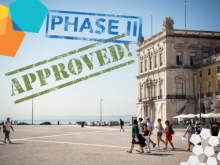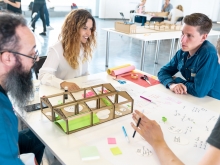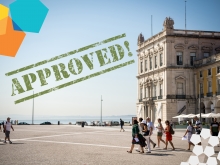
Medina del Campo
The most prominent building in the city is the Castle de la Mota, built by King Juan II and completed by his daughter Isabella on the hill close to the city centre. This is also the main tourist attraction, but there is a frustration that many tourists do not also visit the city centre with its range of historical palaces, convents and museums. The concern is that these historical buildings and the Plaza Mayor are not visible for visitors from the vantage point of the Castle, because of the residential apartment blocks constructed in the 1970s that obscure the view.
The challenge is to communicate to visitors the advantages of visiting the centre before they make their travel arrangements and to increase the walkability and signage to help visitors to get to the centre. Medina del Campo is currently part of a cohort of places in central Castilla y Leon that attract day trips from Madrid and also includes the Rueda wine route and the city of Valladolid.
In keeping with its reputation as the ‘City of Fairs’, Sundays is a normal trading day in Medina del Campo. The city’s heritage as an important centre of commerce stems from the 15th and 16th century when it was the location for the General Fairs (public markets) of the Kingdom where everything was for sale. The Plaza Mayor de la Hispanidad was the centre for all this activity. Today the Museo de las Ferias in the city centre gives a great insight into the development of commerce from its roots in 15th century Medina del Campo.
As would be expected, a city with such heritage value will have a prominent cultural events calendar. These include some of the oldest processions in Spain during Holy Week as well as one of the oldest traditional running of the bulls in honour of San Antolin, the city’s patron saint, in the first week of September.
With attractions such as the Palacio De Las Salinas, Medina del Campo can confidently compete as a regional and national tourism destination.
There is however a concern that reliance on tourism alone is not sufficient for a sustainable local economy78. Even traditional manufacturing such as furniture making, for which the city has a good reputation, is under strain.
The challenge is to nurture an environment for local entrepreneurs to start new businesses and create jobs.
SOME RELATED NETWORKS
CityCentreDoctor
iPlace
Article
23 Action Planning Networks ready for Phase 2!
Article
Making integrated urban development more manageable
Article
5 URBACT lessons to improve Placemaking in your city
News
23 Action Planning Networks approved!
Article







